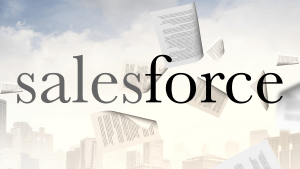- Erik Bullard
- Reading Time: 2 minutes

Salesforce can be tough as nails when it comes to their contract negotiations. As part of their goal to reach $20 billion in revenue by 2022, Salesforce is unrelenting and tends to dictate terms rather than concede to their customer’s needs. If this sounds bleak, one thing to remember is that Salesforce makes the rules, and thus has the ability to bend them. Knowing what they are willing to bend, and by how much, is critical to your negotiation.
Their high level of performance in the market and continued raised revenue guidance only highlights Salesforce’s hunger to grow. The way that they treat their customers is an integral part of their strategy to accelerate this growth. By positioning their inability to change anything from “standard,” often customers overcommit and are left exposed going forward.
There is a lot of room for uncertainty, which only works to the benefit of Salesforce. Generally, any unused pre-paid subscriptions are ultimately held against you come renewal time. Unless you negotiated otherwise, if you decide to renew even one less subscription, you have no protection against price increases. Even if you have 100,000 subscriptions and look to renew 99,999 of them, expect significant increases to your established per-unit pricing.
Negotiating with Salesforce can be a very daunting task. For very large enterprise customers, the magnitude of challenges experienced in a cloud software (“SaaS”) deal is amplified by the sheer volume of the undertaking.
Alternate Contract Structure
If you are a very large enterprise customer, were you aware that there are additional licensing constructs other than the standard MSA? Salesforce has the ability to offer you alternate contract structures that might align more closely with your needs.
Here are a few scenarios where a non-standard contract structure makes sense:
- Organizations that have a clear understanding of the products they will need but might be unsure about the total number of users and when each user will need the products.
- Organizations that are uncertain of their future product needs but have a defined budget and want the flexibility to deploy products as their users need them.
- Organizations that need an unlimited access structure where they have the flexibility to deploy as many users as they want, on any Salesforce product that they want.
If any of these scenarios sound applicable to your organization, you might want to consider an Enterprise Licensing Agreement (ELA). Salesforce does not go out of its way to educate their customers on the various flavors that are available. In fact, many customers aren’t even presented with the concept of an alternate contract structure.
If you are a smaller enterprise and one of the above examples sounds like your needs, there are other ways to achieve some of the same flexibility. While you won’t be offered an ELA, by using your leverage effectively, it is still possible to reach an agreement and go-forward relationship that aligns with your organization’s roadmap.
Related Blogs
Don’t Let Divestitures Undermine Your Salesforce Negotiation
A Hidden Renewal Clause That Could Quietly Inflate Your SaaS Costs
Zimmer Biomet’s $172M ERP Lawsuit Against Deloitte: Disaster, Disclosure, and Investor Risk
About the Author
